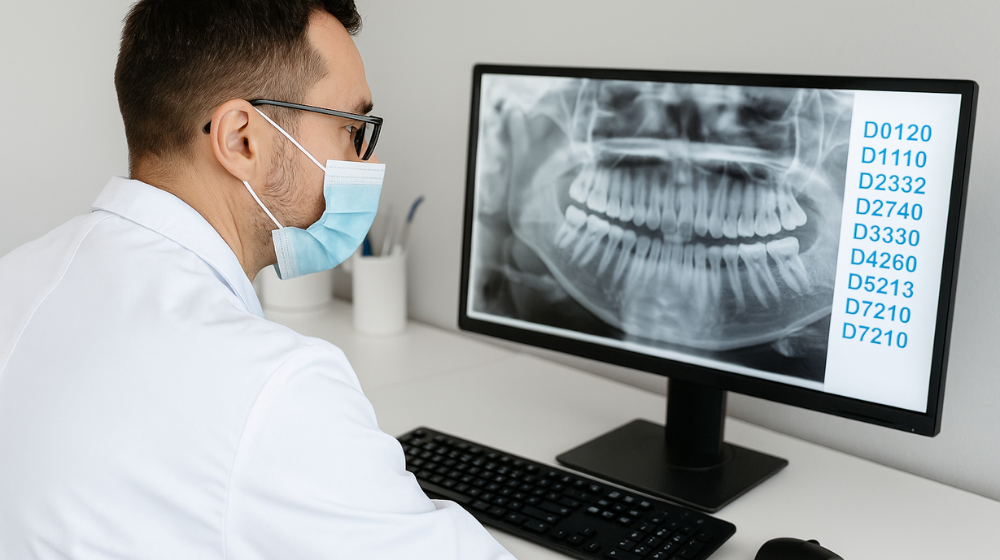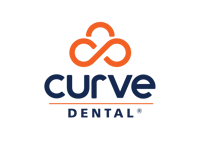Mastering Dental Billing and Coding: A Guide for Modern Practices

Managing a dental practice is about more than providing excellent patient care—it’s also about ensuring your business runs smoothly behind the scenes. One of the most critical parts of that process is dental billing and coding. When done effectively, billing and coding can streamline claims processing, reduce denied reimbursements, improve revenue cycles, and keep patients satisfied with a transparent financial experience.
This comprehensive guide explores the fundamentals of dental billing and coding, best practices to avoid costly mistakes, and how modern tools like all-in-one practice management software can simplify the entire process. Whether you’re an office manager, billing specialist, or dentist looking to better understand the financial backbone of your practice, this article provides actionable insights to strengthen your operations.
What Is Dental Billing and Coding?
At its core, dental billing and coding is the process of translating dental procedures into standardized codes, which are then used to submit insurance claims and secure payment. This ensures that patients, providers, and payers all have a clear and consistent understanding of what services were provided.
-
Dental coding involves assigning specific Current Dental Terminology (CDT) codes to procedures. For example, a routine cleaning has one CDT code, while a crown placement has another.
-
Dental billing is the process of submitting these coded claims to insurance companies, following up on unpaid claims, posting payments, and reconciling balances.
When combined, these two functions become the backbone of dental revenue cycle management, ensuring your practice gets paid accurately and on time.
Why Dental Billing and Coding Matters
For many practices, billing and coding can feel like a tedious back-office function. But in reality, it directly impacts financial stability, patient experience, and long-term growth.
1. Financial Accuracy
Incorrect coding can lead to denied claims or underpaid reimbursements. Over time, this significantly reduces revenue and increases accounts receivable (A/R).
2. Compliance
Insurance companies and government programs have strict rules about coding accuracy. Mistakes may not only cost money but also create compliance risks.
3. Patient Satisfaction
When patients receive accurate estimates and clear statements, they’re more likely to trust your practice and return for ongoing care.
4. Operational Efficiency
A well-managed billing and coding system reduces time wasted on resubmitting claims and chasing unpaid balances, allowing your team to focus on patient care.
Common Challenges in Dental Billing and Coding
Despite its importance, many dental practices struggle with billing and coding. Here are some of the most common obstacles:
-
Claim Denials: Often caused by incorrect codes, missing information, or lack of documentation.
-
Insurance Complexity: Every payer has different rules and timelines, making consistency a challenge.
-
Staff Training Gaps: Without continuous education, coding mistakes become inevitable.
-
Manual Processes: Practices that still rely on paper claims or disconnected systems face inefficiencies and higher error rates.
Identifying these pain points is the first step to resolving them.
Best Practices for Dental Billing and Coding
Optimizing dental billing and coding doesn’t happen overnight—but implementing the right strategies can make a significant difference.
1. Train and Educate Your Team
Continuous training ensures staff stay updated on CDT code changes, insurance rules, and best practices. Annual updates to CDT codes mean that what was correct last year may no longer apply today.
2. Document Thoroughly
Insurance companies require detailed documentation to support claims. Notes, X-rays, and treatment plans should align with the codes being submitted.
3. Verify Insurance in Advance
Before a patient’s visit, verify eligibility and benefits. This step prevents unexpected claim denials and allows you to provide accurate out-of-pocket estimates.
4. Use Technology to Your Advantage
All-in-one practice management software can automate many billing and coding functions, from eligibility checks to claim submissions, significantly reducing errors.
5. Monitor Key Metrics
Keep an eye on your practice’s billing KPIs, such as claim acceptance rates, days in A/R, and percentage of collections. These numbers provide insight into the health of your billing process.
Understanding CDT Codes in Dental Billing and Coding
CDT (Current Dental Terminology) codes are maintained by the American Dental Association and updated annually. Familiarity with these codes is essential for accurate billing. Categories include:
-
Diagnostic (D0100–D0999): Exams, evaluations, and radiographs.
-
Preventive (D1000–D1999): Cleanings, fluoride, and sealants.
-
Restorative (D2000–D2999): Fillings, inlays, and crowns.
-
Endodontics (D3000–D3999): Root canals and pulp treatments.
-
Periodontics (D4000–D4999): Scaling, root planing, and gum surgeries.
-
Prosthodontics (D5000–D6999): Dentures, bridges, and implants.
-
Oral Surgery (D7000–D7999): Extractions and surgical procedures.
-
Orthodontics (D8000–D8999): Braces and other alignment treatments.
-
Adjunctive Services (D9000–D9999): Emergency visits, anesthesia, and miscellaneous services.
Accurate coding means fewer denied claims and more consistent revenue.
How Technology Transforms Dental Billing and Coding
Modern dental practices are increasingly turning to practice management software to simplify billing and coding.
With an all-in-one platform like Curve Dental, practices benefit from:
-
Automated Eligibility Checks: No more manual phone calls or logging into multiple payer portals.
-
Integrated Payments: Next-day payouts, auto-reconciliation, and no hidden fees
-
Real-Time Coding Integration: Codes sync directly into the patient chart, reducing manual entry errors.
-
Electronic Claim Submission: Faster, cleaner claims with fewer denials.
-
Automated Payment Posting: Streamlined workflows for faster collections.
-
Analytics Dashboards: Visual insights into A/R, claim rejections, and overall financial performance.
By consolidating these workflows into a single system, practices can reduce administrative burdens and maximize revenue capture.
The Financial Impact of Better Billing and Coding
Investing in efficient billing and coding processes yields measurable results:
-
Fewer Denials: Accurate coding and eligibility verification reduce rejected claims.
-
Faster Payments: Electronic claims processing accelerates cash flow.
-
Lower A/R: Real-time tracking and automated reminders keep collections clean.
-
Improved Profitability: Streamlined workflows free up staff to focus on higher-value tasks.
For example, practices leveraging Curve Dental’s Eligibility+ and billing tools report 90–95% faster verification and a 40%+ reduction in administrative workload, directly improving the bottom line.
Dental Billing and Coding for Patient Experience
While billing may seem purely administrative, it directly affects patient satisfaction. Patients expect transparency and accuracy when it comes to their financial responsibility.
Here’s how better billing and coding enhances the patient journey:
-
Accurate Estimates: Patients know their out-of-pocket costs before treatment begins.
-
Clear Statements: Easy-to-read billing reduces confusion and frustration.
-
Faster Claims: Patients are less likely to get surprise bills weeks later.
-
Confident Conversations: Staff can confidently explain benefits, coverage, and balances.
By making billing part of a smooth patient experience, you build trust and long-term loyalty.
Outsourcing vs. In-House Dental Billing and Coding
Some practices manage billing and coding internally, while others outsource to third-party companies. Each has pros and cons:
-
In-House: More control, direct patient communication, but requires ongoing training and resources.
-
Outsourced: Access to specialized expertise, potentially fewer errors, but less direct control over processes.
The right choice depends on your practice’s size, resources, and goals. However, even outsourced teams benefit from strong practice management software to keep processes transparent and efficient.
Future Trends in Dental Billing and Coding
The dental industry continues to evolve, and billing is no exception. Practices should be prepared for:
-
AI and Automation: Tools that automatically suggest correct codes based on documentation.
-
Integrated Payments: More practices will adopt systems that tie treatment plans, insurance, and patient payments into a single workflow.
-
Greater Patient Transparency: Patients expect upfront, real-time cost estimates.
-
Regulatory Changes: Updates to CDT codes and insurance requirements will continue annually.
Staying ahead of these trends ensures your practice remains competitive.
Conclusion: Building a Smarter Dental Billing and Coding System
Efficient dental billing and coding is the foundation of a financially healthy, patient-focused practice. By training your team, leveraging technology, and prioritizing accuracy, you can reduce claim denials, increase profitability, and enhance the patient experience.
Modern practice management systems like Curve Dental’s all-in-one platform empower practices to streamline billing, coding, and insurance verification into a seamless workflow. Instead of wasting hours chasing claims or correcting errors, your team can focus on what matters most: delivering excellent care and building lasting patient relationships.
In today’s competitive environment, smarter billing isn’t optional—it’s essential. By mastering dental billing and coding, you position your practice for sustainable success.
*This content was partially generated by artificial intelligence. It may contain errors or inaccuracies, and should not be relied upon as a substitute for professional advice.

Curve Dental
Welcome to the official blog of Curve Dental. Serving up content about the team behind Curve Dental
